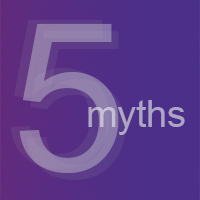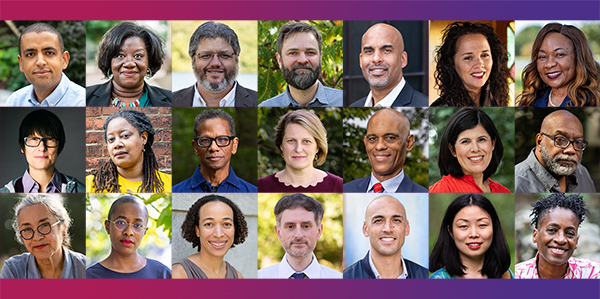
Originally published in the Opinions section of The Washington Post on September 20, 2013.
On Wednesday, the new class of MacArthur Fellows — known to the world as the “genius grant” winners — will be announced. Each year, the John D. and Catherine T. MacArthur Foundation identifies 20 to 30 exceptionally creative individuals with the potential for important work and provides them with financial support, freeing them to pursue their most innovative ideas. These Fellows will receive $625,000 each, up from $500,000 in years past, to spend as they see fit. No one can apply, and no one knows if they are even being considered. We don’t want to spoil the surprise, but we can separate fact from fiction about the program.
1. You have to be a genius to win it.
The foundation does not use the name “genius grant”; the news media coined that nickname in 1981, when we named our first class of Fellows, and it stuck.
Yet, “genius” is both too narrow and too broad to describe MacArthur Fellows. It’s too narrow because the word connotes someone with great academic success or a high score on a standardized test. The Fellows exhibit more than intellectual prowess. They include people like Ruth Lubic (a 1993 Fellow), a nurse-midwife who helped establish birth centers delivering personalized care for low-income women, and Rueben Martinez (2004), who used his barbershop to promote literature in Latino communities.
“Genius” is also too broad because creativity is only one manifestation of genius. It may be expressed through a range of abilities, such as virtuoso artistic performance or athleticism. We admire prodigies and great athletes, but those are not the attributes we are seeking when we make the award. We are looking for individuals who are engaged in the process of making or finding something new, or in connecting the seemingly unconnected in significant ways. We are looking for people on the precipice of a great discovery or achievement.
2. The selection process is shrouded in secrecy.
We are actually quite open about the process for selecting Fellows; it is posted on our Web site.
Each year, the MacArthur Fellows Program invites new nominators — intellectual leaders in their fields — to put forward the most creative people they know. Our staff researches each candidate, collecting examples of the nominee’s work and soliciting the opinions of experts from outside the foundation. An independent selection committee, made up of about a dozen diverse leaders, evaluates the nominations and sends its recommendations to the foundation’s president and board.
To encourage honest evaluations and discussion, nominators, evaluators and selectors all serve anonymously. Their correspondence is kept confidential. We never reveal the names of nominators, evaluators or selection committee members — not even to the Fellows.
3. The winners are usually academics and artists.
Fellows come from every field of human endeavor, from theoretical physics to urban farming.
Many Fellows, like sports-medicine researcher Kevin Guskiewicz (2011), are engaged in highly practical work. Guskiewiczis making advances in the diagnosis, treatment and prevention of concussions. Others are working on projects whose benefits may not be apparent until many years in the future. Astrophysicist Joseph Taylor, for instance, was named a MacArthur Fellow in 1981, but it was more than 10 years later that his work on pulsars was recognized with a Nobel Prize. Some Fellows, like Rosanne Haggerty (2001), address pressing social issues — in her case, providing housing for homeless individuals and families.
Fellows work across fields and sometimes change fields over time. Jim Kim, a physician and medical anthropologist at the time of his Fellowship in 2003, is now president of the World Bank. From 2001 to 2012, 36 percent of the MacArthur Fellows came from the arts and humanities, 36 percent from science or social science, and 26 percent worked on social problems such as homelessness, food security and health care.
The award is speculative; it does not recognize lifetime achievement but invests in individual potential.
4. Creativity “just happens.”
One of the biggest misunderstandings is that creativity is a flash of brilliance that does not require support — that people are either creative or they are not. In fact, virtually all Fellows have invested years honing their expertise, and many have overcome obstacles to projects that have later defined new frontiers. Sometimes an experiment does not yield the expected results but points to a new direction. A researcher may be unable to find money for exploratory research, or a social entrepreneur may lack access to the financiers who can support a smart idea. Fellows have told us about being on the verge of quitting — selling the piano or leaving academic research for a commercial lab — when they got our call.
Creativity blossoms when someone is given the autonomy and flexibility to take on ideas or projects whose potential payoff may be distant or unknown. Creativity shrivels when there are short-term pressures for publication or financial reward. For instance, the 2000 Fellowship program gave radio documentary producer David Isay the freedom to build StoryCorps, now celebrating its 10th year of collecting the oral histories of people from all backgrounds.
And creativity requires role models: stories of individuals who have taken risks and persisted through failures to make something new, to find unexpected solutions to old problems or to create objects of beauty that renew the human spirit. The MacArthur Fellowship is meant to recognize, celebrate and inspire creativity among us all.
5. It’s all downhill after winning the Fellowship.
We do not track the hundreds of books published, patents granted and awards received by our Fellows. It is not even clear that these are the right metrics to capture the program’s success or theirs.
The Fellowship is speculative, based on the potential for creativity, and creativity involves taking risks. If every Fellow hit only home runs, we would worry that they were not taking enough risks or that we’d chosen the wrong people. Also, the success of the program cannot be measured solely by individual outcomes. We bring attention to many overlooked fields, such as blacksmithing (Tom Joyce, 2003) and bowmaking for stringed instruments (Benoît Rolland, 2012), typography (Matthew Carter, 2010) and ornithology (Richard Prum, 2009), language preservation (Jessie Little Doe Baird, 2010) and elder rights (Marie-Therese Connolly, 2011).
So, when we announce the new Fellows Wednesday, remember that they were not selected out of the blue. Individually, they demonstrate a track record of enduring accomplishment through tenacity, imagination and risk-taking. Collectively, they reflect the diversity of American creativity.



